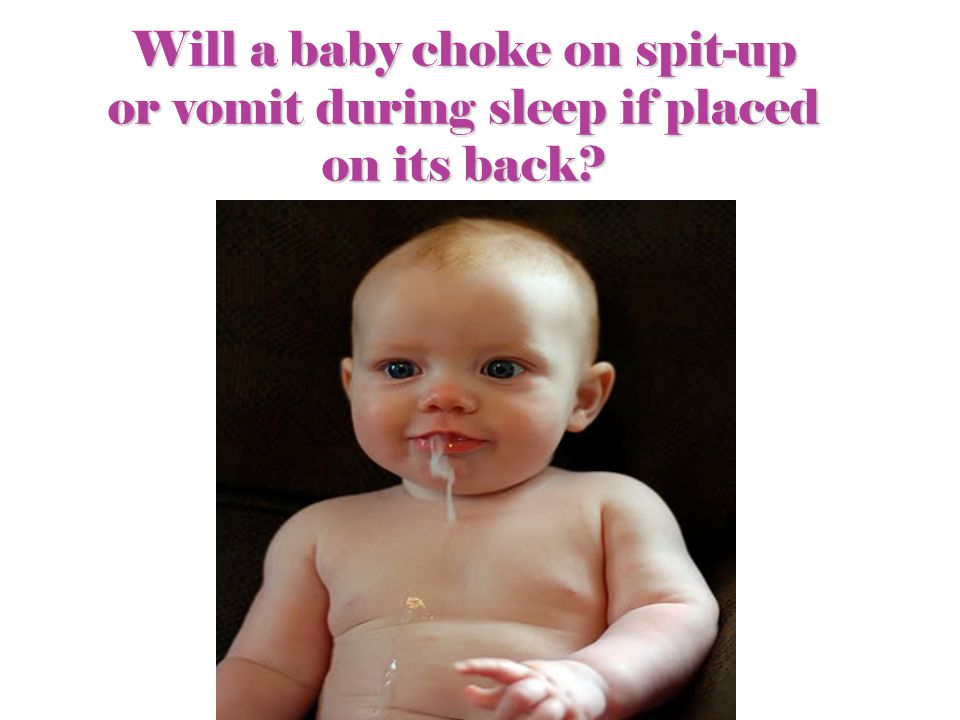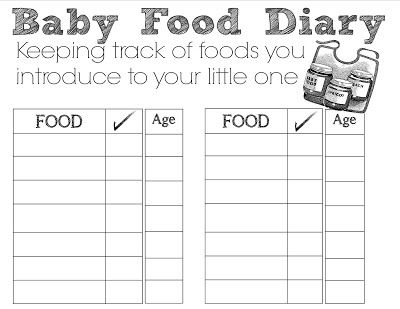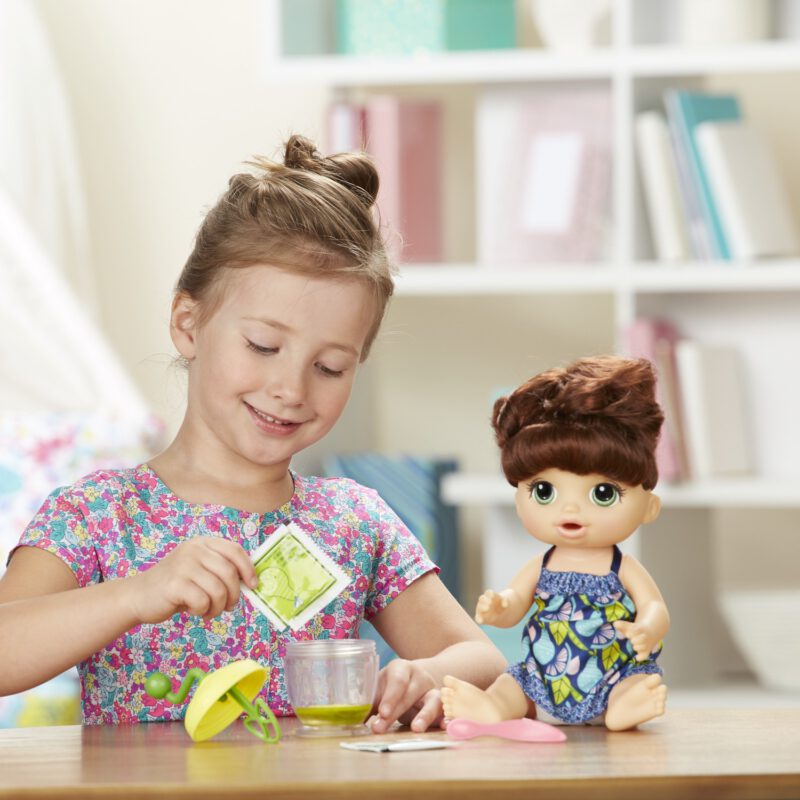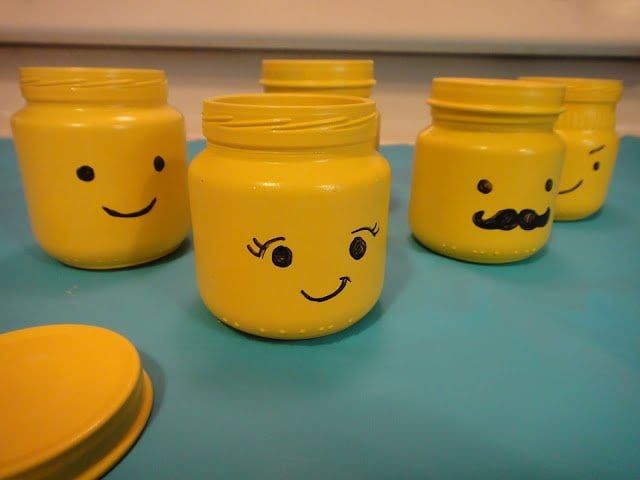Why babies choke during feeding
Help! My Baby Is Choking on Milk!
Many parents look forward to feeding time with their baby. It’s a chance to bond and also gives you a few minutes of peace and quiet.
But for some, bottle feeding or breastfeeding can lead to gagging or choking sounds, which are alarming if you’re a new parent. Fortunately, there are things you can do to help prevent your baby from choking on milk or formula.
If your baby seems to gag a lot while eating, don’t panic. “Choking and gagging during feeding is common in young infants,” says Robert Hamilton, MD, FAAP, a pediatrician at Providence Saint John’s Health Center in Santa Monica.
Hamilton says babies are born with an exaggerated but protective “hyper-gag reflex,” which can cause gagging while feeding. Plus, babies gag easily due to their own neurologic immaturity.
“Babies are growing and learning new ways to use their body (and mouths) every day,” says Amanda Gorman, CPNP and founder of Nest Collaborative, a collection of International Board Certified Lactation Consultants.
“Often, just stopping the feed and positioning the baby upright with good head and neck support will give them a few seconds to manage the problem.”
Gina Posner, MD, a pediatrician at MemorialCare Orange Coast Medical Center, says if your baby begins to choke, let them stop feeding for a little bit and pat their back. “Typically, if they’re choking on liquids, it will resolve quickly,” she says.
The most common reason a baby chokes during breastfeeding is that milk is coming out faster than your baby can swallow. Usually, this happens when mom has an oversupply of milk.
According to the La Leche League International (LLLI), common signs of oversupply include restlessness at the breast, coughing, choking, or gulping milk, especially at let down, and biting on the nipple to stop the flow of milk, among others.
You might also have an overactive let down, which causes a forceful flow of milk into your baby’s mouth. When your breasts are stimulated by your baby suckling, oxytocin causes the let-down reflex that releases the milk.
If you have an overactive or forceful let down, this release happens too fast for your baby to respond appropriately, causing them to gulp or choke while breastfeeding.
How do I prevent my baby from choking on milk when breastfeeding?
One of the first things you can do to help prevent your baby from choking while eating is to change the feeding position.
“For breastfeeding mothers who appear to have overactive let down, we typically recommend they nurse in a laid-back position, which reverses gravity’s effect and allows baby to have more control,” says Gorman.
Posner recommends pulling your baby off the breast every once in a while to help them catch their breath and slow down. You can also take your baby off the breast for 20 to 30 seconds when your milk first lets down.
In addition to a laid-back position, the LLL recommends lying on your side so your baby can allow milk to dribble out of his mouth when it flows too quickly.
Furthermore, expressing milk for 1 to 2 minutes before bringing your baby to your breast can help. Doing so allows the forceful let down to happen before baby latches. That said, be careful with this technique, as pumping for too long will tell your body to make more milk and worsen the problem.
Doing so allows the forceful let down to happen before baby latches. That said, be careful with this technique, as pumping for too long will tell your body to make more milk and worsen the problem.
When your baby gags when drinking from a bottle, it’s often due to the positioning. Lying your baby on their back while bottle feeding will lead to a faster milk flow, making it harder for your baby to control the rate of feeding.
“Tilting the bottom of the bottle higher than the nipple increases the rate of milk flow, as will a nipple with too large of a hole for the infant’s age,” Gorman advises. Tilting the bottle too high can lead to involuntary increases in intake and contribute to problems like reflux.
Instead, when bottle-feeding an infant, try using a technique called paced bottle-feeding. “By keeping the bottle parallel to the ground, the baby remains in control of the milk flow, as they are at the breast,” Gorman says.
This technique allows your baby to actively pull milk out of the bottle using their sucking skills and lets them easily take a break when needed. Otherwise, gravity is in control.
Otherwise, gravity is in control.
For babies who are bottle-fed by multiple caregivers, Gorman says all of the people who administer feeds should be educated on paced bottle-feeding.
Finally, you should never prop the bottle up to feed your baby and walk away. Since they can’t control the flow of the milk, it will keep coming even if your baby is not ready to swallow.
“The mechanism of swallowing is complicated and requires several muscle groups working together in concert and in the right time sequence,” Hamilton says. Fortunately, gagging usually diminishes as children get older and become better at swallowing.
Still, if you’re a new parent or caregiver, it’s smart to take infant cardiopulmonary resuscitation (CPR). While rare, a choking episode that caused your baby to turn blue or lose consciousness would be an emergency.
If you’re having problems related to breastfeeding, contact a LLL leader or International Board Certified Lactation Consultant (IBCLC).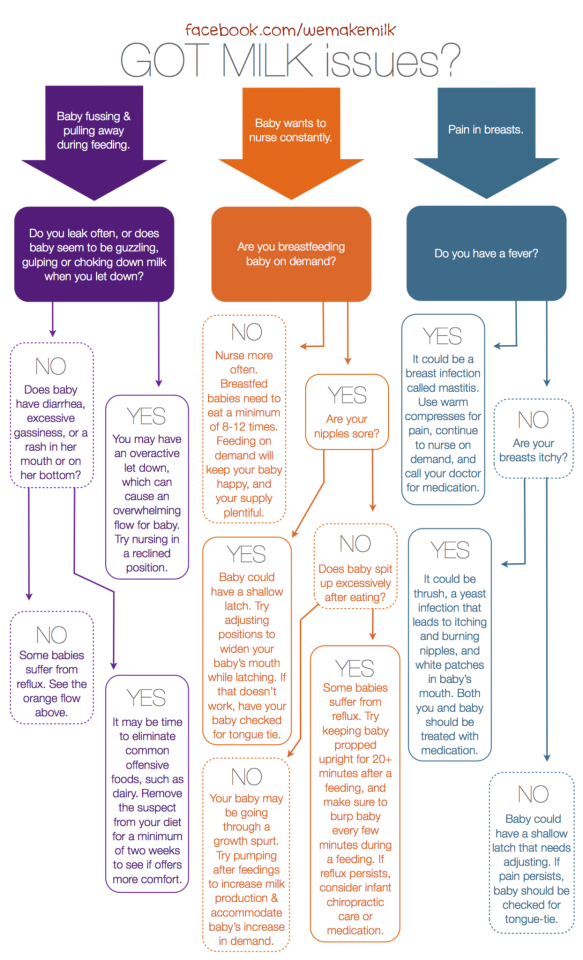 They can help you with your baby’s latch, positioning, oversupply issues, and forceful let-down problems.
They can help you with your baby’s latch, positioning, oversupply issues, and forceful let-down problems.
If you’re having problems related to bottle feeding, contact your child’s pediatrician. They can help you with bottle and nipple selection, as well as feeding positions that prevent choking on milk or formula.
If your baby continues to choke even after slowing down the rate of feeding, you should contact your pediatrician to rule out any anatomical reasons why swallowing may be challenging.
When you hear your baby gagging or choking during feeding, don’t panic. Take baby off the nipple and prop them up to help them clear their airway.
Often it will take a little time for your baby to learn suckle with ease. In the meantime, try keeping your baby upright during feedings and make the flow of milk slower, if possible. Soon enough, feeding time will be a sweet snuggle session!
Baby Choking during Breastfeeding: Causes, Remedies & Prevention
- Home
- Baby
- Breastfeeding Baby Choking While Breastfeeding
By Aliya Khan - Updated: February 3, 2021
Choking occurs when your baby takes more milk into its mouth than he can swallow at a time. Excess milk can spill into the airway and block the flow of air, which leads to choking. It can be a frightening sight for any mother to see her baby coughing and sputtering milk while struggling to breathe. However, with a good understanding of how it occurs, it is possible to avoid this problem while feeding your baby.
Excess milk can spill into the airway and block the flow of air, which leads to choking. It can be a frightening sight for any mother to see her baby coughing and sputtering milk while struggling to breathe. However, with a good understanding of how it occurs, it is possible to avoid this problem while feeding your baby.
Video : Baby Choking While Breastfeeding – Reasons and How to Prevent It
Why Do Infants Choke While Nursing?
Since it is a bit counter-intuitive, many mothers wonder, can a baby choke on milk? They definitely can, under certain circumstances, and it is more common than one might think. Excess milk coupled with poor feeding positions is the most common reason why babies choke while feeding. Here are two ways that this happens:
Here are two ways that this happens:
1. Milk Oversupply
Although some nursing mothers consider having excess breast milk better than having insufficient milk supply, it carries its own set of discomforts for both the mother and the baby. An oversupply of milk means you will need to try different positions for a comfortable feed.
2. Forceful Let-down
Excessive milk supply also leads to forceful let-downs in some women who have what is called a fast Milk Ejection Reflex. The milk releases from their milk ducts in a forceful, almost explosive manner. Look for these signs in your baby while feeding:
- Choking, gagging, gulping, coughing, or gasping while feeding
- Clamping down on the nipple to slow down the milk flow
- Pulling away from the breast often
- Spitting up frequently
- Clicking sounds while feeding
- Refusing to nurse
What to Do When Your Baby Chokes While Breastfeeding?
When you find your baby choking on milk, there are first aid methods that can be used to dislodge the milk from blocking the airway. Since babies have delicate bodies, it must be done with caution. Here are some tips for when babies choke on milk:
Since babies have delicate bodies, it must be done with caution. Here are some tips for when babies choke on milk:
- Pick up the baby while supporting the head and put your arm around the baby’s chest, while bending it forward slightly. Place a clenched fist on the baby’s navel, place the other hand over the fist, and thrust inward. The thrusts should be given hard and quickly, and slightly upwards into the child’s abdomen.
- Babies can also be turned upside down and given intermittent back blows and chest thrusts combined with gentle taps to the back, to open up the airways. The chest thrusts should be given with two or three fingers on the lower half of the breastbone, while supporting the head with the other hand. This should be continued until the block is removed.
It’s important to note that if the baby doesn’t recover and becomes unconscious, he should be rushed to the nearest hospital, while still being administered the dislodging procedure.
How to Prevent Your Baby From Choking While Breastfeeding
There are several ways in which you can control an oversupply problem and prevent the baby from choking. Here are some tips for the same:
- Slowing down your milk supply is a good place to start, as forceful let-down occurs when there is too much accumulation of milk in the breasts. While breastfeeding from one side, say the left side, with the palm of the right hand, press the nipple of the right breast in towards the ribs and count to five. This counter pressure, when applied several times per feed, sends a signal to the body not to let down milk in that breast.
- Feed from only one breast, per feeding, so the breast can be fully emptied with the added benefit of receiving all the fat-rich hind milk. This would make them feel full and stop the feed. You can also try what is known as “block feeding”, a technique where the baby is fed only through one breast for a block of time, lasting a few hours.
 This reduces milk supply in the other breast before you switch the breast for the next block.
This reduces milk supply in the other breast before you switch the breast for the next block.
- Ensure the baby is latched properly. It has been observed that babies who do not have a deep latch on the nipples, choke often while feeding. The milk which is supposed to go straight down into their throat accumulates in the mouth when babies latch improperly. On the other hand, a firm latching can help babies better handle the flow of milk.
- Adopting an uphill nursing position is also greatly beneficial, as the milk has to work against gravity to flow and it avoids letdowns. Having the baby feed in your arms as you recline on a surface, is also a good nursing position.
- The down under position can also be used to feed the baby, which works the milk against gravity. The mother lies down on her back and the baby is on top, such that the baby’s tummy touches the mother’s. This shouldn’t, however, be done too often, as it can lead to plugging of the milk ducts.

- The football hold, while leaning backwards, is also an effective feeding position. It is also a good way to nurse when you are out with your baby.
- When the other breast feels uncomfortable, you can express some milk from it and apply a cool compress to relieve the discomfort. As you continue this procedure, express lesser milk, until there is no need to do so.
- Avoid stimulating the breast in the form of unnecessary pumping, running water on them during a shower, or using breast shells.
How Often Should You Feed Your Baby?
It is important to understand that excessive milk can harm your baby as well, so even if you have an oversupply of milk produced, all of it need not be fed to the baby. You can always pump out the excess, if required. Feed your baby as long as he is satiated. Look out for signs of hunger in your baby, which are usually if he:
- turns towards the breasts when picked up
- imitates sucking motions
- has hishands in the mouth
- has sudden bursts of excitement
An ideal amount of feedings is between 8-12 feeds a day, each lasting 30-40 minutes.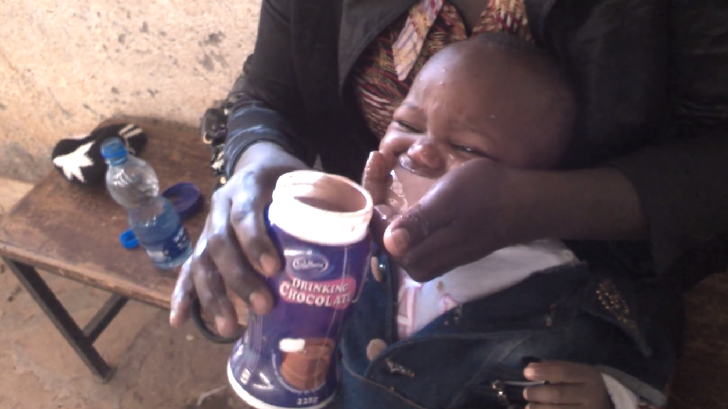 However, this number may differ for each baby, based on growth spurts, metabolism, etc. Let your baby feed until he is satisfied, which happens when the baby automatically let’s go, rather than limiting sessions. As long as your baby is healthy and not hungry, you’re feeding him enough.
However, this number may differ for each baby, based on growth spurts, metabolism, etc. Let your baby feed until he is satisfied, which happens when the baby automatically let’s go, rather than limiting sessions. As long as your baby is healthy and not hungry, you’re feeding him enough.
Precautionary measures taken before and during feeding can avoid choking in babies, while they are being nursed.
Also Read:
Baby Crying While Breastfeeding
Baby Sweating during Breastfeeding
Cold Medicine during Breastfeeding
Previous article « 5 Foods That Increase Fertility for Conceiving Twins
Next article Some Tips for New Moms to Stay Healthy and Happy »
- RELATED ARTICLES
The child chokes when feeding: what to do?
Nikulina Anastasia Anatolyevna
pediatrician
A newborn chokes when feeding for various reasons. Some of them the mother can eliminate, while others depend on the health of the baby. The pediatrician Anastasia Anatolyevna Nikulina will explain the causes and solutions to this problem.
Some of them the mother can eliminate, while others depend on the health of the baby. The pediatrician Anastasia Anatolyevna Nikulina will explain the causes and solutions to this problem.
— Anastasia Anatolyevna, at what age do children most often choke while feeding?
— In the first weeks of life, when the swallowing reflex is still very weak, it is difficult to dose milk supply from the breast. From the bottle, the flow of formula is controlled by the opening in the nipple and the tilt. If the hole in the nipple is not age appropriate, it is tight, then the newborn swallows air. Excess air with the mixture will enter the intestines, causing discomfort to the baby.
Why does the baby choke while breastfeeding or bottle feeding
- Baby position or bottle angle not optimal. in the optimal position. In the right position, the hand of the woman who holds the child lies on the support. Hold the baby by the back and shoulders, directing the head to the chest.
 You can’t press hard on the head - the baby will recline it back reflexively.
You can’t press hard on the head - the baby will recline it back reflexively. - Anatomical features of the mother's breast, in which a woman produces enough breast milk, but it is difficult for a child to suck it out, to eat. Before feeding, the mother needs to express some of the milk or massage the breast: it will become soft, and it will be easier for the baby to suck.
- Large nipples are difficult for a baby to grab - to solve the problem, there are special nipple covers through which newborns are fed. You can feed your baby with expressed milk through a bottle and a nipple that is correctly selected for age.
- Hyperlactation. Pressurized breast milk squirts into the baby's mouth. Before feeding, some of the foremilk is expressed, and the following, more fatty, does not form a strong flow. Breaks in the sucking process also help.
- Frequent breastfeeding. The absence of long breaks between attachments to the breast prevents children from hunger and, with it, the rush to feed.
- Incorrect bottle delivery method. The neck of the bottle must be completely filled with milk: this way there will be no air in the milk. The nipple is selected taking into account the age of the baby.
- Disease. Nasal obstruction or cough interferes with feeding. Relief of the symptoms of the disease will improve nutrition. For some children, problems can be caused by improper swallowing or reflux.
- To understand why the baby is having difficulty swallowing, you need to gradually eliminate each of the possible causes. Even the environment matters. During feeding hours, it is desirable for a woman to be alone with the child, nothing should distract him from the process. If the mother finds it difficult to identify the cause, a pediatrician will help her.
— What should I do if my child chokes on milk or formula?
- Spontaneous cough is the main symptom that appears when the act of sucking and swallowing is disturbed. The baby is crying and refuses to eat.
First aid for choking children
If you can’t cough up excess milk on your own or the baby chokes on saliva and starts to choke, you need to do the following, dosing the force of your actions:
- Place the baby on one hand with the belly down, with your free hand apply pressure on the area above the navel (on the area of the baby's stomach), supporting the chin.
- Tilt the child slightly forward, lightly pat on the back. This will increase the cough and help restore breathing.
- Can I continue feeding after the baby clears his throat, or should I take a break?
- Feeding can be continued after the baby clears his throat. It is advisable to vilify it with a column for two to three minutes, so that excess air comes out, and then resume feeding.
- Does increasing the interval between feedings help with the problem?
- On the contrary, the prevention of flooding will be frequent feeding. With numerous attachments, less milk accumulates in the woman’s breast, it becomes easier for the mother to feed.
With numerous attachments, less milk accumulates in the woman’s breast, it becomes easier for the mother to feed.
If the child is choking, feeding should be interrupted. The baby will cough, rest and continue to suck. If the situation recurs frequently, be sure to consult your pediatrician. Your doctor can help you find the best breastfeeding or formula-feeding method for you.
* Breast milk is the best food for babies. WHO recommends exclusive breastfeeding for the first 6 months of a child's life and continued breastfeeding after complementary foods are introduced until the age of 2 years. Before introducing new products into the baby's diet, you should consult with a specialist. The material is for informational purposes and cannot replace the advice of a healthcare professional. For feeding children from birth. The product is certified.
#Tips for Mom #regurgitation 7-12 #regurgitation 12 plus
See also
Omicron in children: how dangerous it is and how babies get sick up to a year
#Tips for Mom
Kiseleva Elena Sergeevna
Candidate of Medical Sciences, Scientific Advisor MAMAKO ®
First tests and vaccinations: how to prepare yourself and your child
#Advice for Mom
Kizino Polina Alexandrovna
pediatrician, perinatal psychologist
Why DHA, ARA and lutein are added to infant formula
#baby formula #Baby Development
Yakovenko Margarita Pavlovna
Candidate of Medical Sciences, Pediatrician, Pediatric Neurologist, Medical Advisor MAMAKO ®
Goat's milk in children's nutrition: for or against
#Food #Advice to mom #Baby digestion #breastfeeding
Javier Diaz Castro
professor, lecturer
How to tell if a baby has a food allergy
#allergy #Advice to mom #breast-feeding #baby formula #lure
Kiseleva Elena Sergeevna
Candidate of Medical Sciences, Scientific Advisor MAMAKO ®
Calendar of doctor visits during the first year of a child's life
#Advice for Mom
Kizino Polina Alexandrovna
pediatrician, perinatal psychologist
How to properly rock a baby to sleep
#Advice for Mom
Kizino Polina Aleksandrovna
pediatrician, perinatal psychologist
Neurologist for a child under one year old: first examination
#Tips for Mom #Baby Development
Yakovenko Margarita Pavlovna
Candidate of Medical Sciences, Pediatrician, Pediatric Neurologist, Medical Advisor MAMAKO ®
Principles of Successful Lactation: Mom's Checklist
#Tips for Mom #breastfeeding
Yakovenko Margarita Pavlovna
Candidate of Medical Sciences, Pediatrician, Pediatric Neurologist, Medical Advisor MAMAKO ®
Digestion in newborns and infants and its features
#Baby Digestion #breast-feeding #baby formula #Lure #Advice to mom #Baby development
Kiseleva Elena Sergeevna
Candidate of Medical Sciences, Scientific Advisor MAMAKO ®
See all
View all
Goat's milk in children's nutrition: for or against
# Lure # Tips for Mom # Baby's digestion # breastfeeding
Javier Diaz Castro
professor, lecturer
Digestion in newborns and infants and its features
# Baby digestion # breast-feeding # infant formula # Lure # Tips for Mom # Baby development
Kiseleva Elena Sergeevna
Candidate of Medical Sciences, Scientific Advisor MAMAKO ®
Neurologist for a child under one year old: first examination
# Tips for mom # Baby development
Yakovenko Margarita Pavlovna
Candidate of Medical Sciences, Pediatrician, Pediatric Neurologist, Medical Advisor MAMAKO ®
Calendar of doctor visits during the first year of a child's life
# Tips for mom
Kizino Polina Alexandrovna
pediatrician, perinatal psychologist
Principles of successful lactation: checklist for mom
# Tips for mom # breastfeeding
Yakovenko Margarita Pavlovna
Candidate of Medical Sciences, Pediatrician, Pediatric Neurologist, Medical Advisor MAMAKO ®
How to properly rock a baby to sleep
# Tips for mom
Kizino Polina Alexandrovna
pediatrician, perinatal psychologist
Why DHA, ARA and lutein are added to infant formula
# infant formula # Baby development
Yakovenko Margarita Pavlovna
Candidate of Medical Sciences, Pediatrician, Pediatric Neurologist, Medical Advisor MAMAKO ®
Omicron in children: how dangerous it is and how babies get sick up to a year
# Tips for mom
Kiseleva Elena Sergeevna
Candidate of Medical Sciences, Scientific Advisor MAMAKO ®
See all
First tests and vaccinations: how to prepare yourself and your child
# Tips for mom
Kizino Polina Alexandrovna
pediatrician, perinatal psychologist
How to tell if a baby has a food allergy
# allergy # Tips for Mom # breast-feeding # infant formula # lure
Kiseleva Elena Sergeevna
Candidate of Medical Sciences, Scientific Advisor MAMAKO ®
See all
View all
View all
Baby chokes while breastfeeding
Contents:
- 1 Why does a baby choke while feeding
- 2 How to help a baby
- 3 First aid if a baby chokes
- 4 If the baby chokes on solid food
Sometimes a breastfeeding mother is not able to immediately establish breastfeeding, and various problems arise in the process. In particular, she may encounter the fact that the baby chokes on milk while breastfeeding. To determine what to do in this case, you need to understand why the baby is choking during feeding.
In particular, she may encounter the fact that the baby chokes on milk while breastfeeding. To determine what to do in this case, you need to understand why the baby is choking during feeding.
Why does a baby choke when feeding
- Hyperlactation or excessive milk volume causes the baby to not swallow liquids as quickly. As a result, it gets into the wrong throat, and the newborn may choke and begin to cough;
- If a nursing mother has weak nipples and breast milk flows by itself without any effort on the part of the baby, he may also not have time to swallow. As a result, the baby chokes and coughs;
- An uncomfortable position during breastfeeding is the most common cause of this phenomenon, especially if the child is lying on his back at this time. Incorrect attachment and uncomfortable posture also contribute to the fact that the baby will swallow a large amount of air along with milk. As a result, after feeding, he will spit up a lot of food and hiccup, sometimes vomiting may occur;
- The child is too hungry and because of this quickly and greedily swallows milk.
 If this happens frequently, it may be necessary to reconsider the feeding regimen. And to eliminate this cause, it is better to use on-demand feeding;
If this happens frequently, it may be necessary to reconsider the feeding regimen. And to eliminate this cause, it is better to use on-demand feeding; - The newborn has breathing problems, including a runny or stuffy nose. In this case, it is difficult for the child to eat and breathe, he tries to take a breath while sucking milk, but as a result he chokes and coughs;
- Often in a newborn up to two months there is a weak swallowing reflex, when the baby begins to suck milk, but cannot swallow completely. This passes by three months;
- If you are feeding your baby milk or formula from a bottle, the cause may be the wrong nipple. How to choose the right pacifier for your baby, see here;
- Problems with the larynx, esophagus or neurological diseases are rare causes that occur in special cases. Such problems can only be solved with the help of doctors.
How to help a baby
The solution to the problem depends on the type of problem. First of all, you need to choose the right and comfortable position for feeding. Make sure that he does not lie on his back when feeding. Add pillows if necessary. Try standing poses where baby and mom are both upright. For more information on which position to choose for breastfeeding, see the link https://vskormi.ru/breast-feeding/pozi-kormleniya-grudnogo-rebenka/.
First of all, you need to choose the right and comfortable position for feeding. Make sure that he does not lie on his back when feeding. Add pillows if necessary. Try standing poses where baby and mom are both upright. For more information on which position to choose for breastfeeding, see the link https://vskormi.ru/breast-feeding/pozi-kormleniya-grudnogo-rebenka/.
If there is an excess of breast milk, it is recommended to express up to 40 grams of milk immediately before feeding. This will relieve pressure in the breast and reduce the amount of milk fluid. Sometimes, with hyperlactation, pediatricians advise feeding only one breast for several days, and expressing the second. Then the flow of milk is normalized.
If the nipples are weak, control the flow of milk by holding the breast and lightly pressing on the areola. A suitable position for this problem will be feeding, in which the mother sits or reclines at an angle of 45 degrees. The child in this case should lie on the woman's stomach. Excess milk will just spill out.
Excess milk will just spill out.
Feed on demand to keep your baby full. In addition, such nutrition has a beneficial effect on the mental and emotional, mental and physical development of the crumbs. The child grows more calm and confident, does not cry or act up.
If your baby is bottle fed, choose a pacifier responsibly. It may be inconvenient for the baby to hold the pacifier or the hole in the product is too large. Constantly check the pacifier for integrity, do not use products with scratches, holes or other defects! And remember that bottle feeding harms breastfeeding. The baby quickly gets used to a convenient container and rarely returns to the breast.
If your child has a stuffy nose, they most likely have a cold or an allergic reaction to some irritant. In this case and in case of other possible diseases, be sure to consult a doctor!
First aid if the baby is choking
When a baby chokes while breastfeeding, stop the process and hold the baby upright.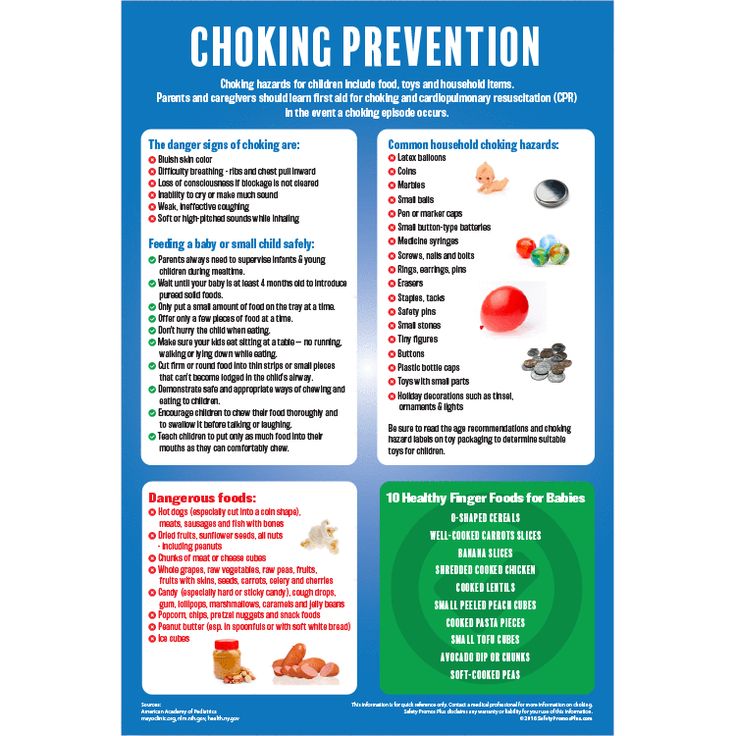 Wait for him to catch his breath and burp. Then you can attach the baby to the breast again. In addition, you can wipe the nipple or areola with an ice cube, then the pressure in the breast will decrease, and the milk will begin to flow evenly.
Wait for him to catch his breath and burp. Then you can attach the baby to the breast again. In addition, you can wipe the nipple or areola with an ice cube, then the pressure in the breast will decrease, and the milk will begin to flow evenly.
A choked baby can be turned back to you, supported under the tummy and lightly patted on the back. Then he will burp faster. Make sure that the body is slightly tilted forward. Do not pat on the back of a child who is held upright!
If the baby chokes on solid food
If you are already feeding your baby solid food, he may start to choke on solid food. This is due to the fact that he still does not know how to chew. So that it does not choke, solid food is crushed or ground to a puree state, liquid dishes are given. It is especially important to do this during teething, as the baby may completely refuse such food.
The chewing reflex appears already after six months. Teach your baby to chew gradually and do not switch to solid foods abruptly. The first complementary foods are given in liquid form and gradually make the consistency thick. After 12 months, food is cut into small pieces. In addition, babies are already being given a chance to chew on pieces of fruit without peel. Be sure to include biscuits in complementary foods. Stimulate your child's interest in solid foods!
The first complementary foods are given in liquid form and gradually make the consistency thick. After 12 months, food is cut into small pieces. In addition, babies are already being given a chance to chew on pieces of fruit without peel. Be sure to include biscuits in complementary foods. Stimulate your child's interest in solid foods!
Today you can find a special device that helps the baby to master the skill of chewing. This is a nibbler, which is a mesh nipple, where a piece of fruit, vegetable or cookie is placed inside. The baby sucks and chews the nibbler, feels the taste of food and gets used to chewing solid food.
Nibbler can be used after seven months. It is important that when using this device, the child must breathe through the nose! Do not use the appliance if your baby has a stuffy nose or breathing problems. With proper development, a healthy child begins to chew and swallow by the age of two, and by three, the baby finally masters this skill. What to do if the baby does not know how to chew, read the article "How to teach a child to chew.